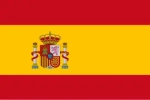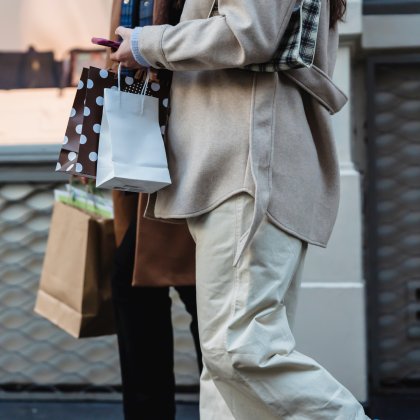Product Photography Guide for Trandau Marketplace Sellers
High-quality product photography is one of the most important factors in e-commerce success. This comprehensive guide will help you create professional product images that convert browsers into buyers—even if you're on a budget.
Why Product Photography Matters
In online shopping, your product images serve as the customer's eyes and hands. They can't physically touch, feel, or try your products, so your photos must do the selling for you:
- First impressions: 93% of consumers consider visual appearance to be the key deciding factor in purchasing decisions
- Reduced returns: Clear, accurate photos lead to fewer returns due to unmet expectations
- Higher conversion rates: Listings with professional photos convert up to 3x better than those with poor images
- Better search ranking: Trandau's algorithm favors listings with high-quality, properly formatted images
- Brand perception: Professional photos build trust and elevate your brand image
The Numbers Don't Lie:
- Listings with 5+ high-quality images sell 94% more than those with fewer images
- 67% of consumers say image quality is "very important" in their purchase decision
- Zoom-capable images increase conversion rates by 25%
- Listings with white background main images convert 300% better than those with cluttered backgrounds
Essential Equipment
You don't need expensive gear to create professional product photos. Here's what you'll need to get started:
Camera Options
Smartphone Camera
Pros: Accessible, easy to use, increasingly powerful
Best for: Beginners, small products, social media content
Tips:
- Use portrait mode for background blur
- Clean your lens before shooting
- Use the volume buttons as shutter release
- Install a camera app with manual controls
Digital Camera
Pros: Better image quality, more control, optical zoom
Best for: Intermediate sellers, detailed products, larger items
Tips:
- Use aperture priority mode (A or Av)
- Set ISO to 100-400 for clean images
- Use a remote shutter or self-timer
- Consider a 50mm prime lens for best results
Lighting Setup
Lighting is the most important factor in product photography. Good lighting reveals details, shows true colors, and creates professional results:
Natural Light Setup
Cost: Free
Best for: Beginners, small products, clothing, jewelry
What you'll need:
- A window with indirect sunlight
- White foam board for reflection
- Sheer curtain to diffuse harsh light
- Table placed near the window
Artificial Light Setup
Cost: $50-200
Best for: Consistent results, shooting at any time
What you'll need:
- 2-3 LED lights (5000K-5500K "daylight" temperature)
- Light stands or clamps
- Diffusers (softboxes or umbrellas)
- White and black foam boards for reflection/shadow
Budget Tip: Create a DIY lightbox using a cardboard box with the top and sides cut out and replaced with white tissue paper. Place LED desk lamps on either side, and you'll have soft, diffused lighting for small products at minimal cost.
Backgrounds and Surfaces
The right background makes your product stand out and creates a professional look:
- White sweep background: The standard for product photography, created with a curved piece of white paper
- Colored paper backdrops: For creating contrast or complementing your product
- Textured surfaces: Wood, marble, fabric, or tile for lifestyle context
- Acrylic sheets: For creating reflections beneath products
DIY Background Ideas:
- Poster board ($1-2 per sheet)
- Foam core board ($3-5 per sheet)
- Vinyl photography backdrops ($15-30)
- Wrapping paper for textured backgrounds
- Fabric remnants from craft stores
Other Essential Tools
- Tripod: Eliminates camera shake for sharper images (smartphone adapters available)
- Props and styling tools: Small items to hold products in place (clear fishing line, tape, putty)
- Cleaning supplies: Microfiber cloths, compressed air, lens cleaner
- Editing software: Adobe Lightroom, Photoshop, or free alternatives like GIMP or Snapseed
- Color checker card: For accurate color representation
Setting Up Your Photography Space
Creating a dedicated space for product photography will help you work efficiently and achieve consistent results:
Choosing the Right Location
- Near a window: If using natural light, set up near a north-facing window (south-facing in the southern hemisphere)
- Stable surface: Use a sturdy table that won't wobble during shooting
- Adequate space: Ensure enough room to move around your setup
- Clean area: Keep the space dust-free to minimize editing time
- Storage: Consider nearby storage for equipment and props
Creating a White Background Setup
A clean white background is essential for your main product images on Trandau Marketplace:
- Position your table near your light source (window or artificial lights)
- Create a "sweep" by taping white paper or poster board to the wall and letting it curve down onto the table
- Set up your lights at 45-degree angles to the product, one on each side
- Position reflectors on the opposite sides to fill shadows
- Place your product in the center of the sweep
- Set up your camera on a tripod directly in front of the product
Lighting Diagram:
Light/Window Light/Window
\ /
\ /
\ /
\ /
\ /
\ /
\ /
\ /
\ /
[Your Product]
/ \
/ \
Camera Reflector
Setting Up for Lifestyle Photos
Lifestyle photos show your product in use or in a contextual setting:
- Choose complementary props that enhance but don't overshadow your product
- Create a cohesive color palette that aligns with your brand
- Consider the rule of thirds when composing lifestyle shots
- Use natural settings when appropriate (kitchen for cookware, outdoors for camping gear)
- Show scale by including familiar objects for size reference
Essential Product Photo Types
For a complete product listing, you should include several types of images. Here's what to shoot:
1. Main/Hero Image (White Background)
This is your most important image—it appears in search results and should show your product clearly:
- Clean white background with no shadows or distractions
- Product fills 85-90% of the frame but with some breathing room
- Front-facing angle that clearly shows what the product is
- Perfect lighting with even illumination and no harsh shadows
- Square format (1:1 aspect ratio) for optimal display in search results
Trandau Requirement: Your main product image must have a pure white background (RGB value: 255, 255, 255), show only the product being sold with no props or models, and must not include text, logos, or watermarks.
2. Multiple Angle Shots
Show your product from different perspectives to give buyers a complete view:
- Front view: The standard, straight-on shot
- Side view: Shows the product's depth and profile
- Back view: Reveals features on the reverse side
- Top view: Shows the product from above
- Bottom view: Displays the base of the product
- 45-degree angle: Often the most flattering perspective
3. Detail/Close-up Shots
Highlight specific features, textures, and craftsmanship:
- Material texture: Close-ups of fabric, wood grain, leather, etc.
- Special features: Zippers, buttons, connectors, unique elements
- Quality indicators: Stitching, finishes, craftsmanship details
- Moving parts: Show how components open, close, or adjust
- Inside view: Interior compartments or hidden features
4. Scale/Size Reference Photos
Help customers understand the product's size:
- In-hand photos: Show the product being held (if appropriate size)
- Comparison with common objects: Place next to recognizable items
- Ruler or measuring tape: Include in the frame for precise reference
- Model shots: Show wearable items on a person
Size Reference Ideas:
- Coins for small items
- Credit card (without personal information visible)
- Smartphone for medium-sized items
- Standard water bottle
- Ruler or measuring tape
5. Lifestyle/In-Use Photos
Show your product in a real-world context:
- Product in use: Demonstrate how the product functions
- Styled context: Show the product in its intended environment
- Benefit demonstration: Visually show the product's benefits
- Lifestyle setting: Create aspirational imagery that tells a story
6. Group/Collection Photos
If applicable, show product variations or sets:
- Color variations: All available colors in one image
- Size options: Different sizes shown together
- Complete sets: All pieces included in a set
- Family of products: Related items shown together
Photography Techniques and Best Practices
Follow these techniques to capture professional-quality product photos:
Camera Settings
- Use a low ISO: Keep ISO between 100-400 to minimize noise/grain
- Set appropriate aperture: Use f/8 to f/11 for product photography to ensure adequate depth of field
- Adjust shutter speed: With a tripod, you can use slower shutter speeds without blur
- Use manual focus: Auto-focus can sometimes miss the most important details
- Shoot in RAW format: If your camera supports it, RAW files provide more editing flexibility
- Set white balance: Use the appropriate preset or a custom white balance
Smartphone Camera Settings:
- Turn on grid lines to help with composition
- Use AE/AF lock (tap and hold) to set focus and exposure
- Adjust exposure manually if available
- Turn off flash and use natural or continuous lighting
- Use HDR mode for high-contrast subjects
Composition Techniques
- Rule of thirds: Place key elements along the grid lines or at their intersections
- Negative space: Allow breathing room around your product
- Leading lines: Use natural lines to draw attention to your product
- Symmetry and balance: Create visually pleasing arrangements
- Consistent framing: Maintain similar composition across product images
Lighting Techniques
- Diffuse your light source: Soft, diffused light minimizes harsh shadows
- Use reflectors: Fill shadows with reflected light for balanced exposure
- Control contrast: Adjust the distance between lights and reflectors
- Create highlights: Position lights to create appealing highlights on glossy products
- Eliminate unwanted reflections: Use black cards to block reflections on shiny surfaces
Lighting Tip: For transparent or reflective products (glass, jewelry, electronics), use a light tent or create a DIY version with translucent white fabric to minimize unwanted reflections and create even lighting.
Styling and Preparation
- Clean your products: Remove dust, fingerprints, and smudges
- Iron or steam clothing: Ensure textiles are wrinkle-free
- Use invisible supports: Clear stands or fishing line to hold items in position
- Arrange products deliberately: Nothing should look accidental
- Check for distractions: Remove anything that draws attention from the product
Post-Processing and Editing
Even the best product photos usually need some editing to look their best. Here's how to enhance your images:
Essential Editing Steps
- Crop and straighten: Frame your product properly and ensure straight lines
- Adjust white balance: Ensure colors are accurate and whites are truly white
- Correct exposure: Brighten underexposed areas and recover highlights
- Increase contrast: Add depth and dimension to make products pop
- Remove dust and blemishes: Clean up any imperfections
- Sharpen details: Apply subtle sharpening to enhance texture and details
Creating Pure White Backgrounds
For Trandau's main product images, you need a pure white background (RGB 255,255,255):
- Select the background using the Magic Wand, Select Subject, or manual selection tools
- Refine the selection edge to ensure clean transitions between product and background
- Create a new white layer beneath your product
- Remove any shadows that extend beyond the product
- Check the RGB values to ensure the background is pure white (255,255,255)
Recommended Editing Software:
- Professional: Adobe Photoshop, Adobe Lightroom
- Budget-friendly: Affinity Photo, Luminar
- Free options: GIMP, RawTherapee, Darktable
- Mobile apps: Snapseed, Lightroom Mobile, Photoshop Express
- Online tools: Pixlr, Canva, Remove.bg (for background removal)
Batch Processing
Save time by applying the same edits to multiple similar photos:
- Create presets or actions: Save your editing steps for reuse
- Process similar photos together: Apply the same settings to photos taken in the same session
- Use batch renaming: Create a consistent naming convention
- Batch resize: Ensure all images meet Trandau's size requirements
Image Optimization for Web
Properly optimize your images for fast loading and high quality:
- Resize appropriately: Trandau recommends 2000 x 2000 pixels for zoom capability
- Use the right format: JPG for photos, PNG for images with transparency
- Compress files: Reduce file size while maintaining quality (aim for under 5MB per image)
- Use sRGB color space: Ensure consistent colors across devices
- Include alt text: Add descriptive text for accessibility and SEO
Optimization Tip: Use online tools like TinyPNG, ImageOptim, or Squoosh to compress your images without noticeable quality loss. This improves page load times, which can positively impact your conversion rates and search ranking.
Product Photography for Specific Categories
Different product types require specific approaches. Here are tips for common categories:
Clothing and Apparel
- Use mannequins or models: Show how garments fit and hang
- Capture details: Close-ups of fabric, stitching, and embellishments
- Show all angles: Front, back, sides, and any special features
- Include flat lays: Garments arranged neatly on a flat surface
- Steam or iron: Ensure clothing is wrinkle-free
- Use styling clips: Hidden clips can improve fit on mannequins
Jewelry and Small Items
- Use macro photography: Get extremely close to show fine details
- Control reflections: Use a light tent or diffusers to minimize unwanted reflections
- Show scale: Include reference objects or show being worn
- Use props thoughtfully: Display jewelry on appropriate props (e.g., ring stands, neck forms)
- Focus stack if necessary: Combine multiple images with different focus points for complete sharpness
- Clean thoroughly: Remove all fingerprints, dust, and smudges
Home Goods and Furniture
- Show in context: Photograph furniture in a staged room setting
- Include multiple angles: Show front, sides, back, and any special features
- Demonstrate functionality: Show drawers open, adjustable features, etc.
- Use wide-angle lenses carefully: Avoid distortion that misrepresents size
- Include measurements: Visual size references and dimensions
- Highlight materials: Close-ups of wood grain, fabric textures, etc.
Electronics and Gadgets
- Show powered on and off: Display screens both active and inactive
- Include all accessories: Cables, adapters, manuals, etc.
- Demonstrate key features: Show the product performing its main functions
- Capture all ports and connections: Show compatibility options
- Control reflections: Minimize glare on screens and glossy surfaces
- Clean thoroughly: Remove fingerprints and dust
Handmade and Craft Items
- Highlight craftsmanship: Show details that demonstrate quality and skill
- Capture texture: Use side lighting to emphasize texture and dimension
- Show the creation process: Include photos of items being made
- Use natural props: Style with materials that complement the handmade aesthetic
- Demonstrate scale: Include size references for custom items
- Show variations: Display custom options and color choices
Common Mistakes to Avoid
Lighting Mistakes
- Using direct, harsh flash
- Inconsistent lighting between photos
- Underexposed, dark images
- Blown-out highlights with lost detail
- Mixed light sources with different colors
Composition Mistakes
- Cluttered, distracting backgrounds
- Poor framing with cut-off product parts
- Inconsistent angles between product photos
- Too much empty space around small products
- Crooked horizons and misaligned products
Technical Mistakes
- Out-of-focus or blurry images
- Low resolution or pixelated photos
- Excessive noise/grain from high ISO
- Over-edited, unnatural-looking images
- Incorrect white balance with color casts
Presentation Mistakes
- Dirty or dusty products
- Wrinkled clothing or textiles
- Visible props that should be hidden
- Inconsistent style across product images
- Missing important angles or details
Frequently Asked Questions
Do I really need professional equipment to take good product photos?
No, you don't need expensive equipment to take good product photos. Many successful sellers use smartphone cameras with proper lighting and techniques. The most important factors are good lighting, clean backgrounds, sharp focus, and proper composition. Investing in basic lighting (even DIY solutions) will make a bigger difference than an expensive camera.
How many photos should I include for each product?
Trandau allows up to 10 photos per listing, and we recommend using at least 5-8 images. Include your main white-background shot, multiple angles, detail close-ups, size reference photos, and lifestyle/in-use images. More comprehensive visual information leads to higher buyer confidence and fewer returns.
How do I achieve a pure white background without professional equipment?
Create a DIY lightbox using a cardboard box with the top and sides cut out and replaced with white tissue paper. Place it near a window or use desk lamps on either side. Use white poster board curved from the back to the bottom to create a seamless background. In editing, use the levels or curves tool to make the background pure white while being careful not to overexpose the product.
Should I use filters or heavy editing on my product photos?
No, avoid heavy filters or excessive editing that misrepresents your product. Your goal should be to show the product as accurately as possible while making it look its best. Basic adjustments to white balance, exposure, contrast, and removing dust or minor blemishes are appropriate, but the colors and appearance should remain true to the actual product.
How can I make my photos stand out from competitors?
Consistency and quality are key differentiators. Create a recognizable style for your brand by using consistent lighting, backgrounds, and composition across all your listings. Pay attention to small details that others might overlook. Include lifestyle images that tell a story about your product and help customers envision using it. Finally, ensure your photos show unique features or benefits that set your products apart.
Need More Help? If you have additional questions about product photography for your Trandau listings, please contact our seller support team at seller-success@trandau.com or through the Seller Help Center.
 English
English Spanish
Spanish

